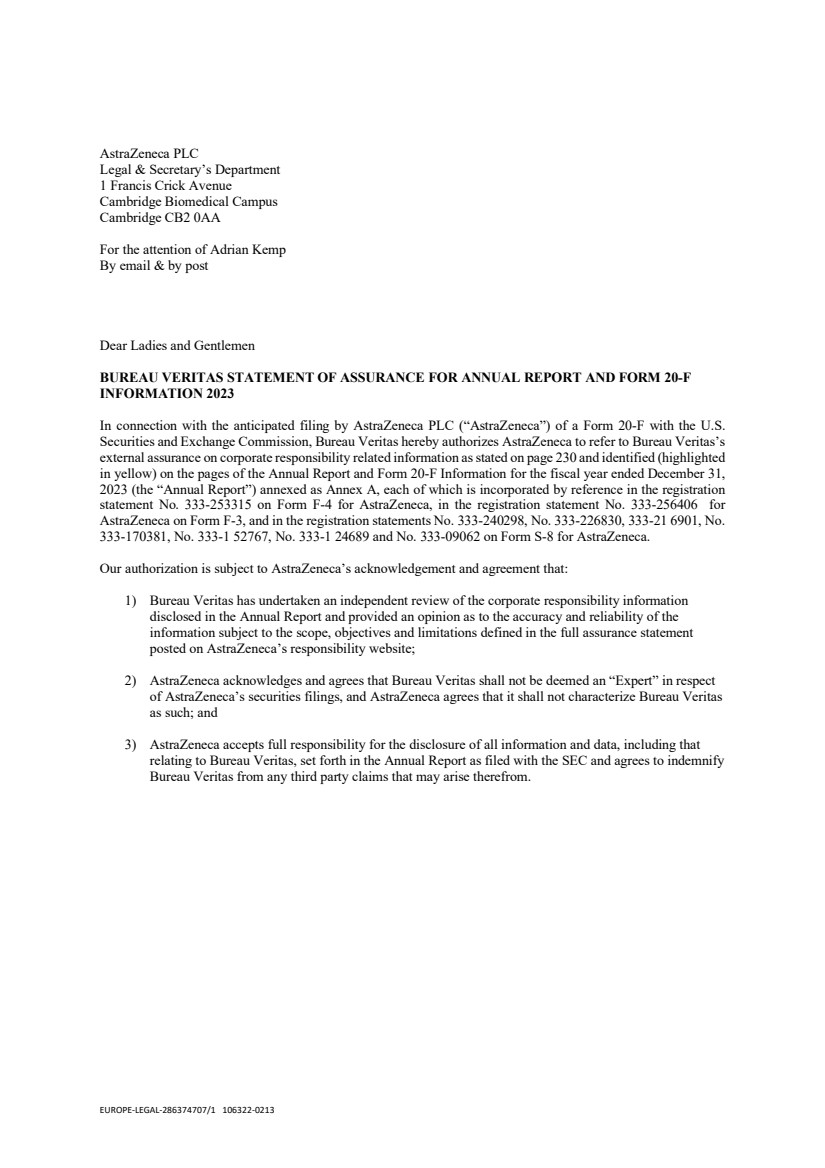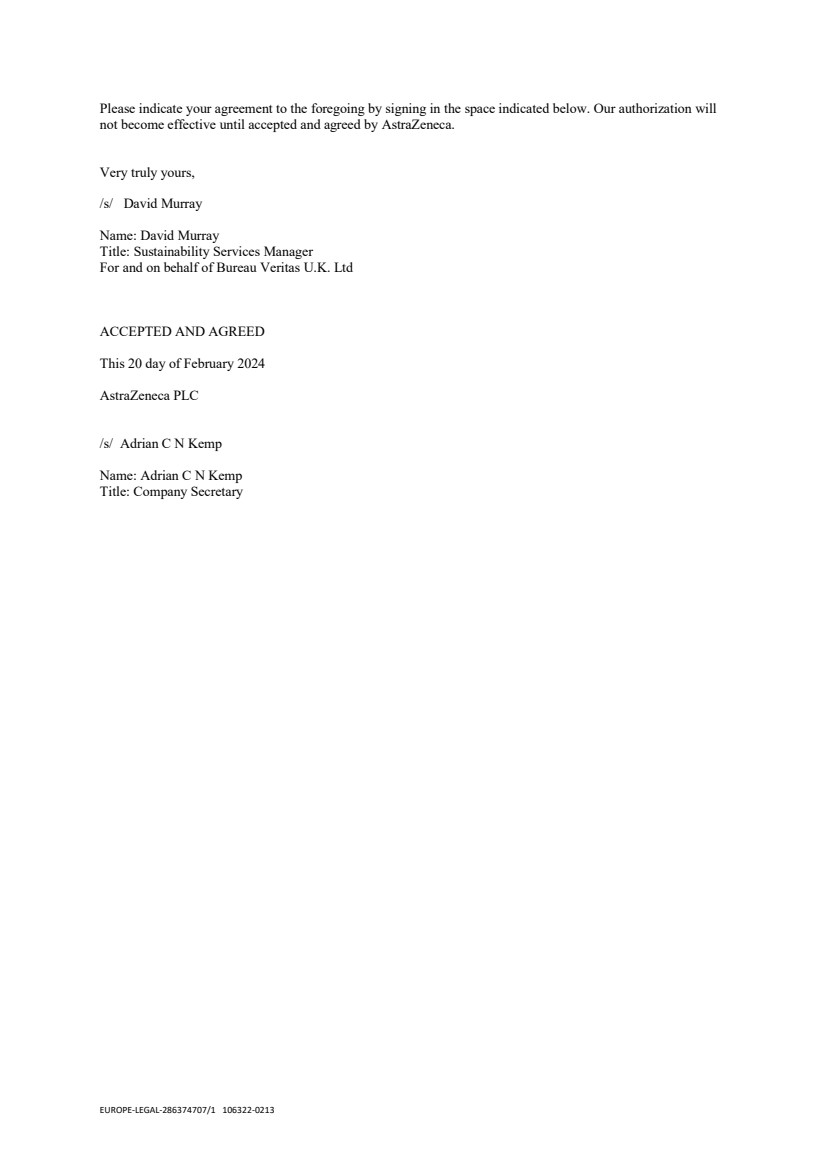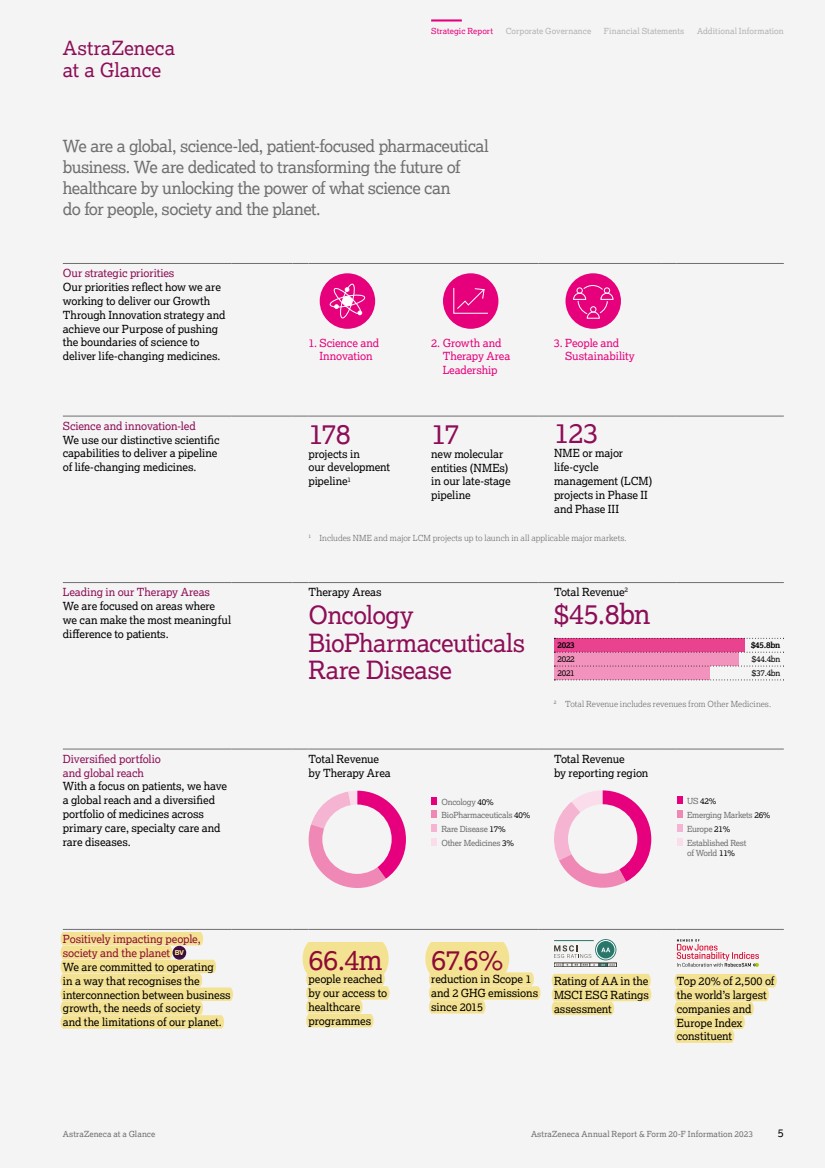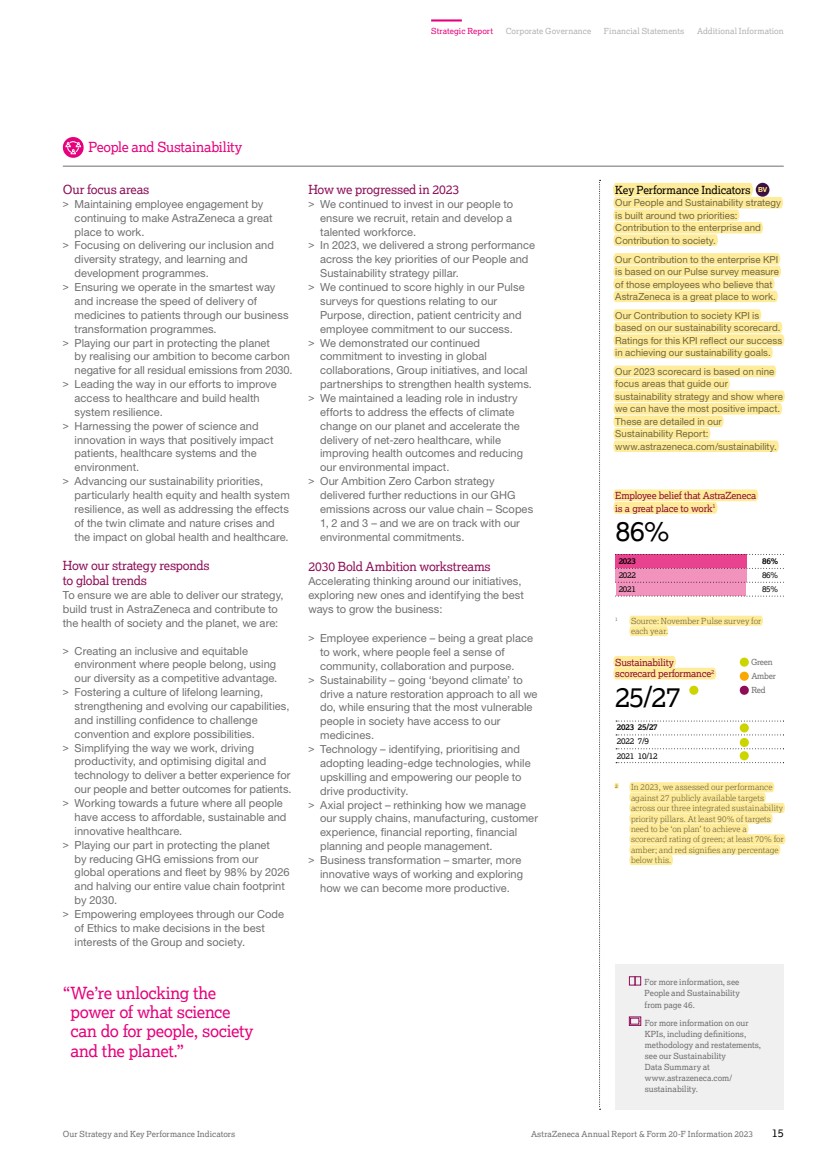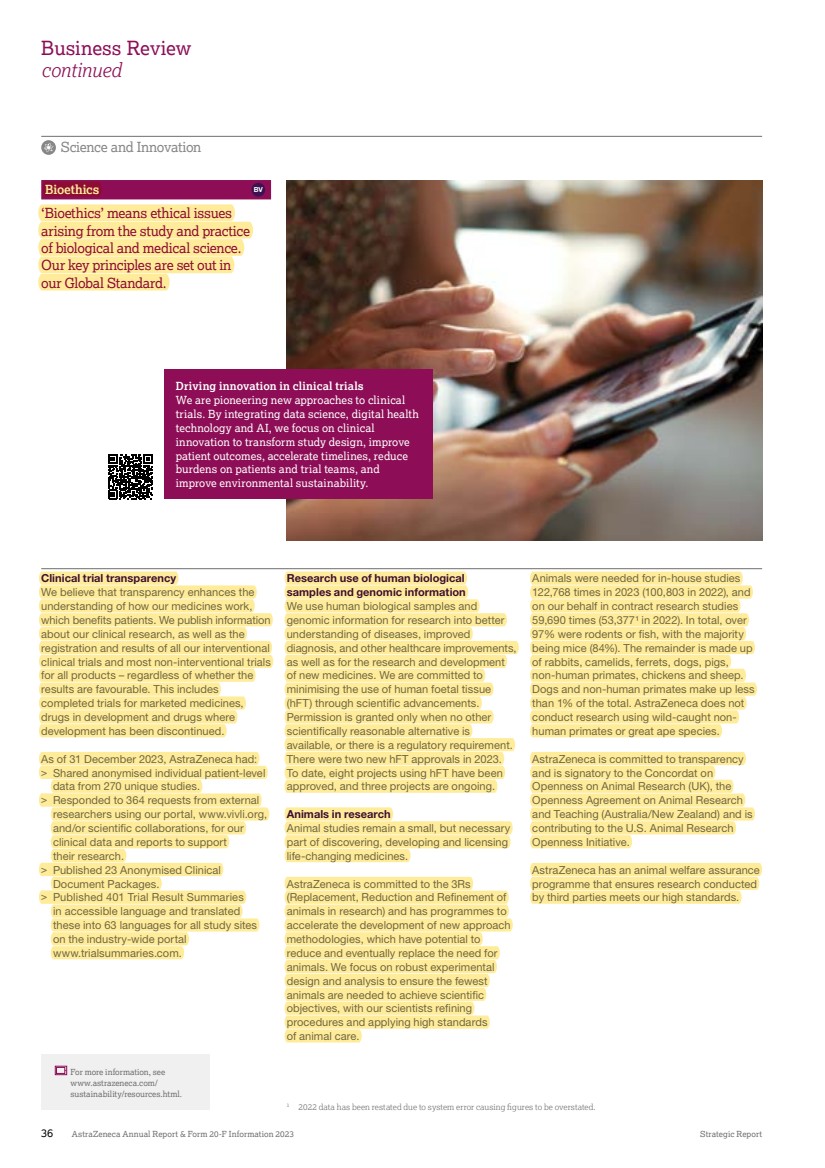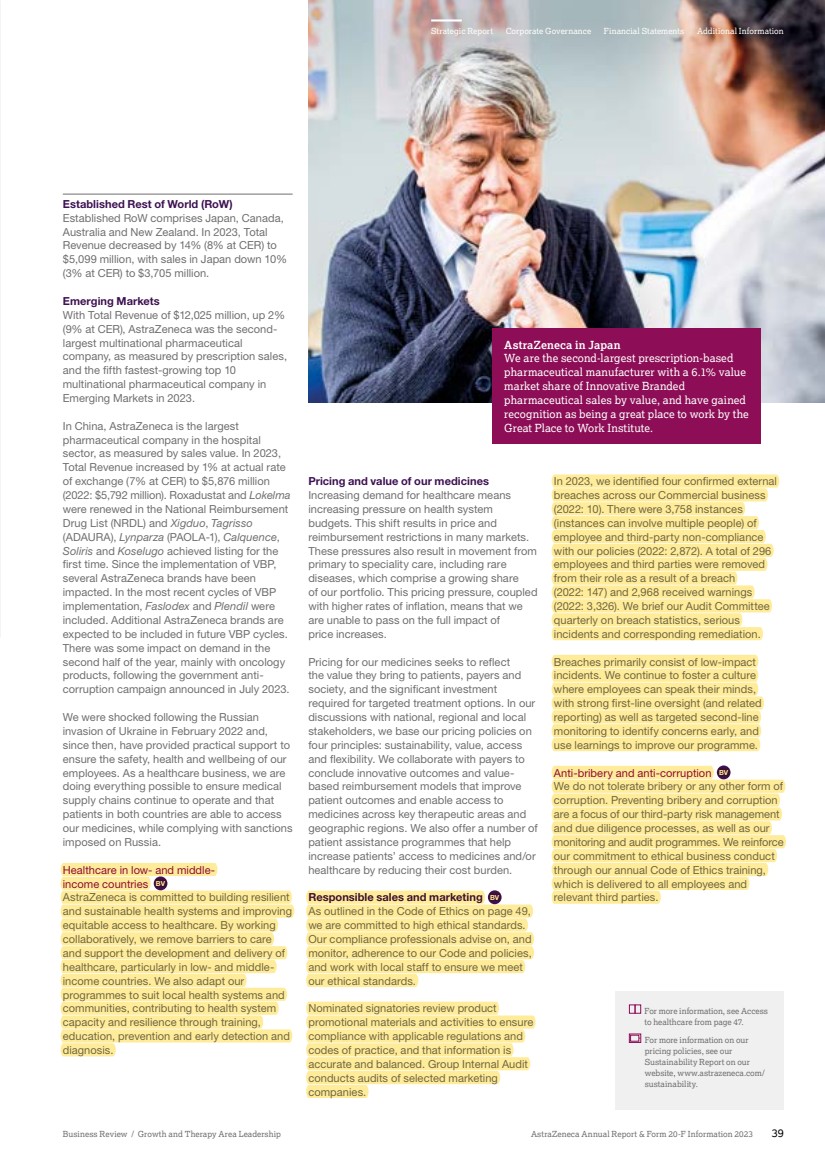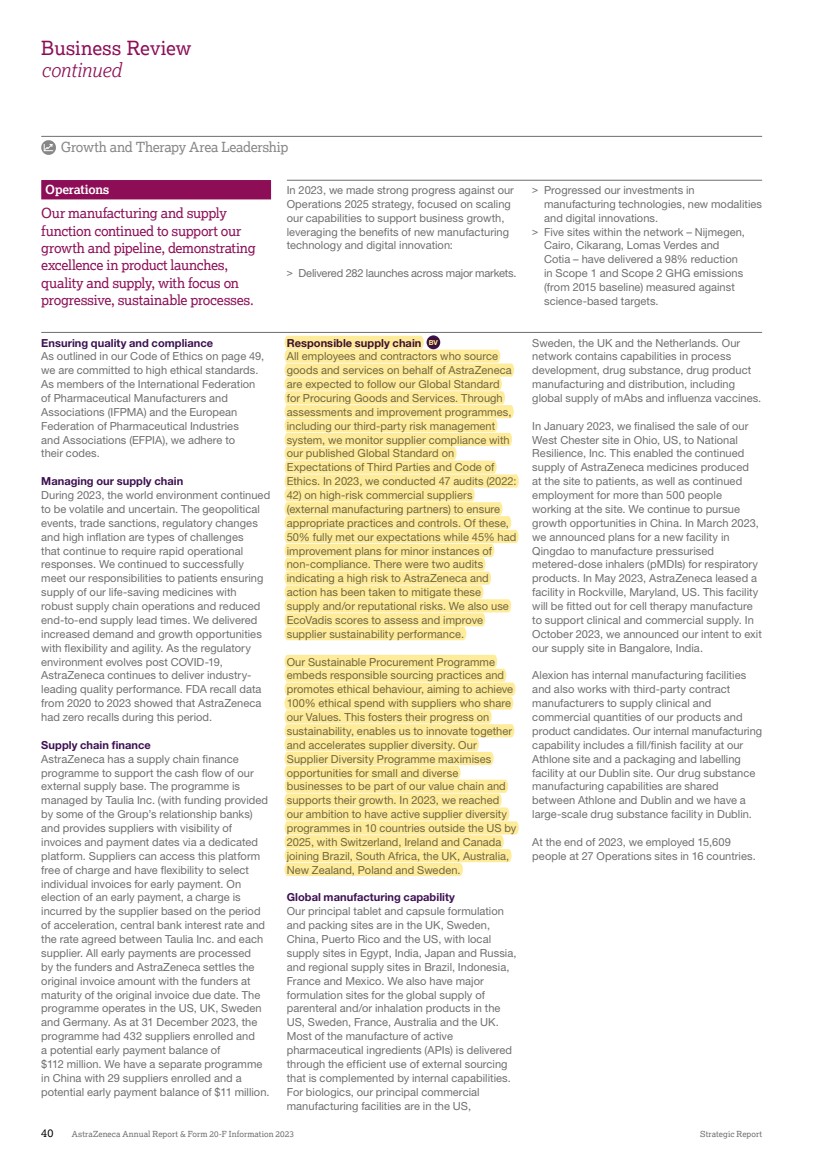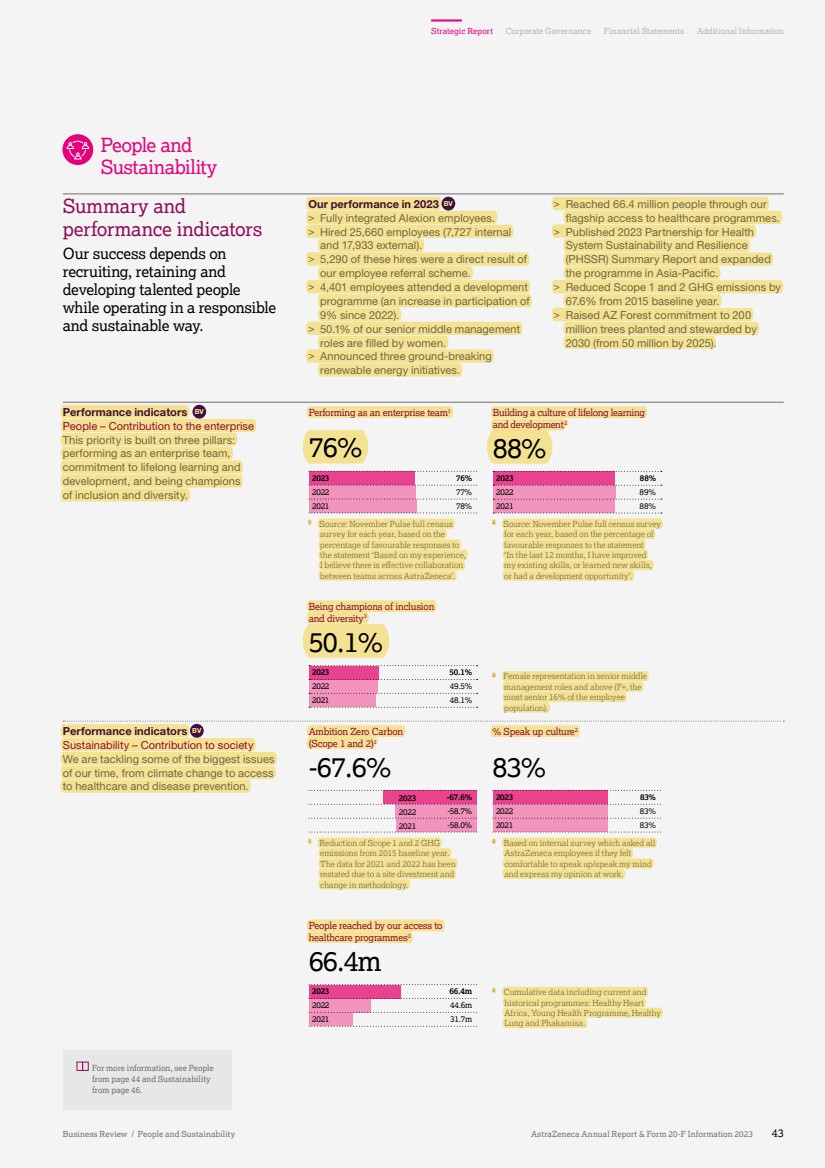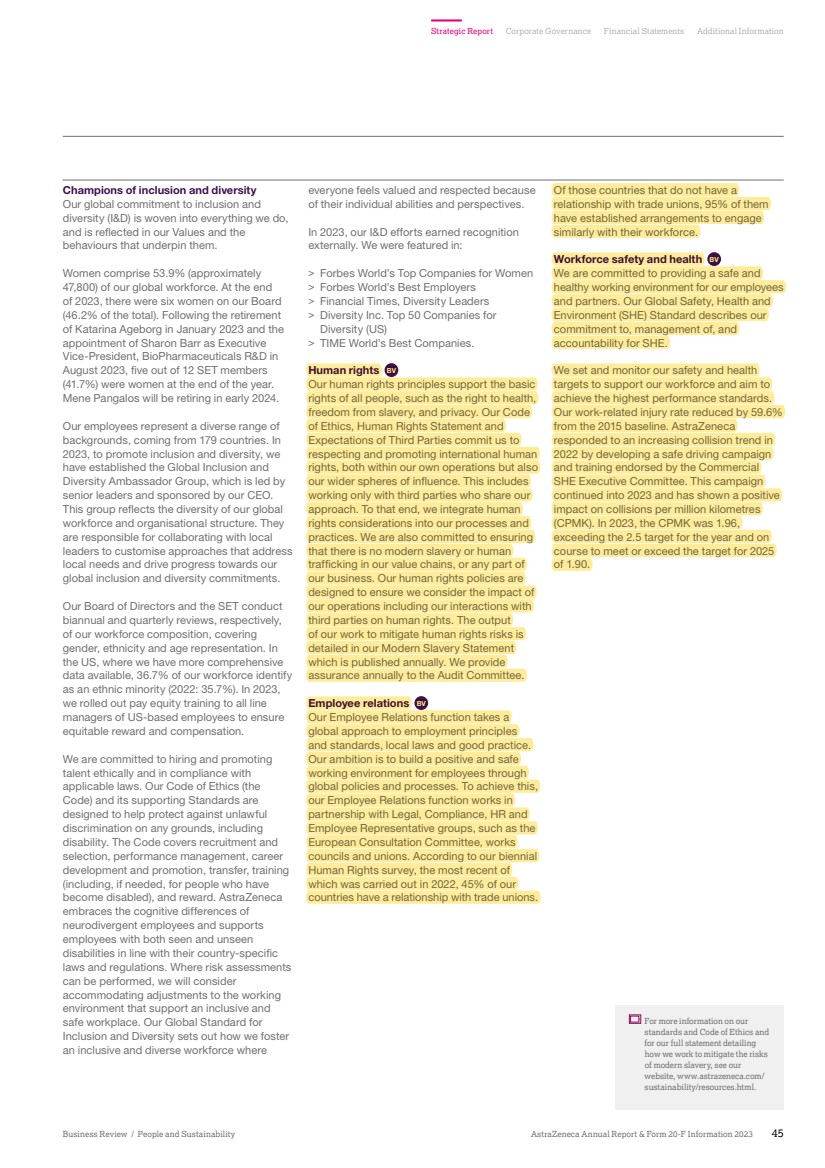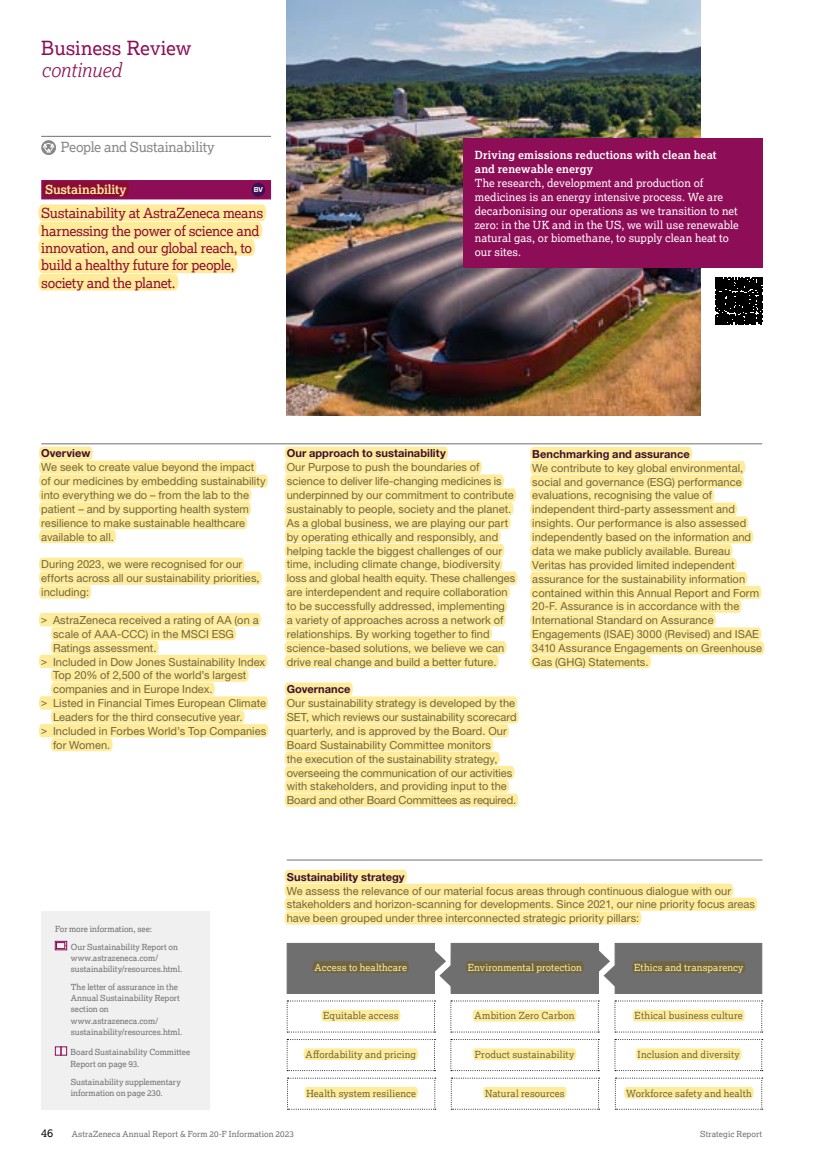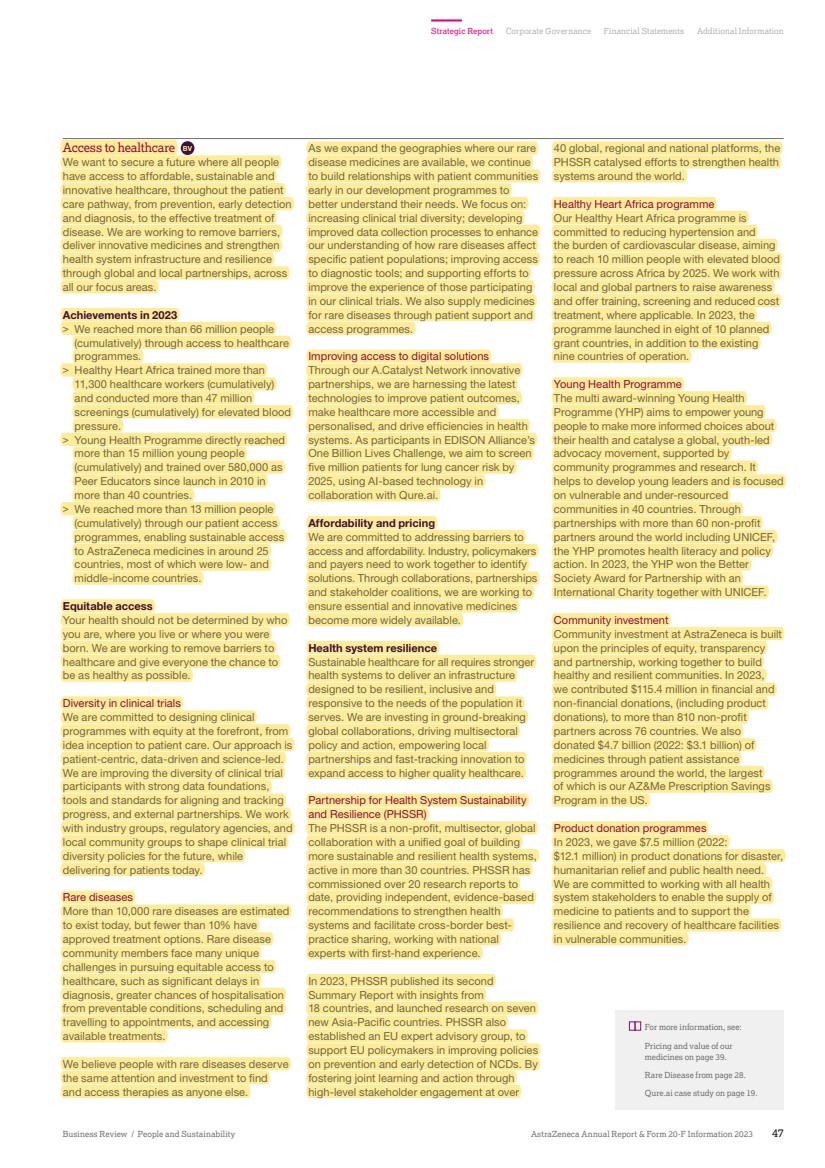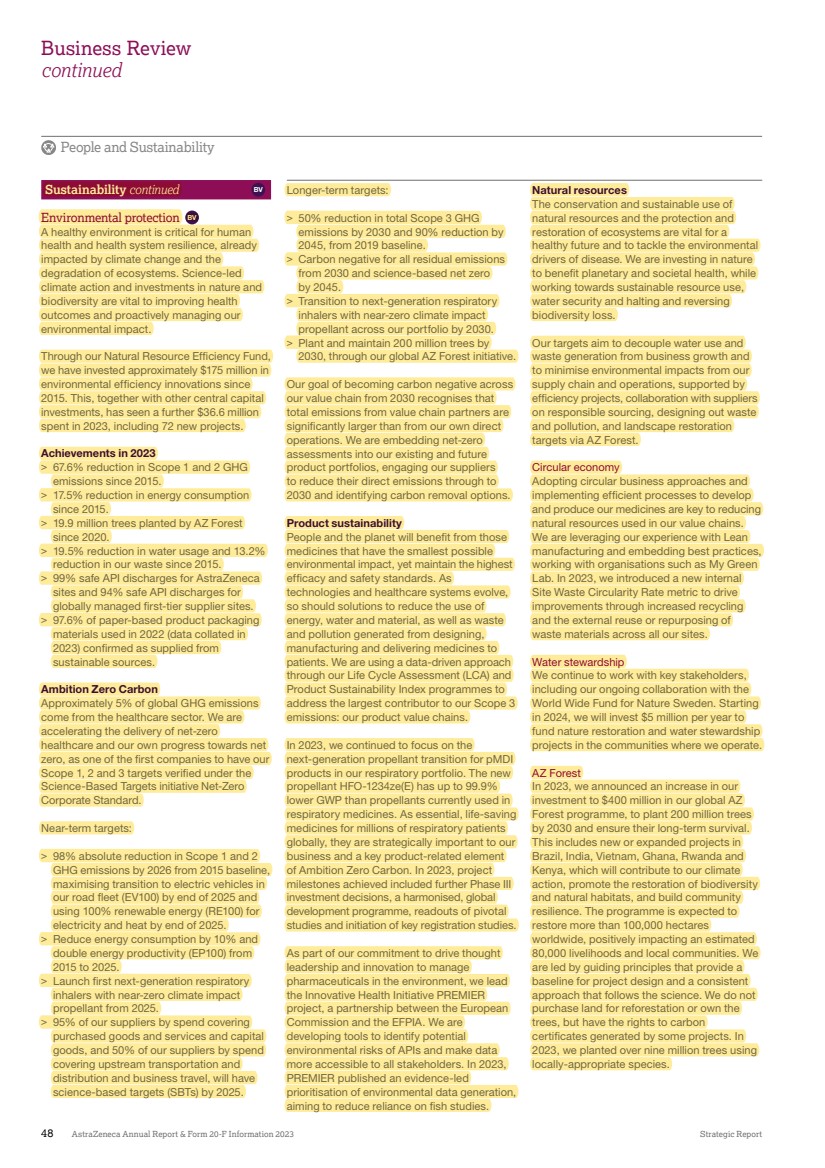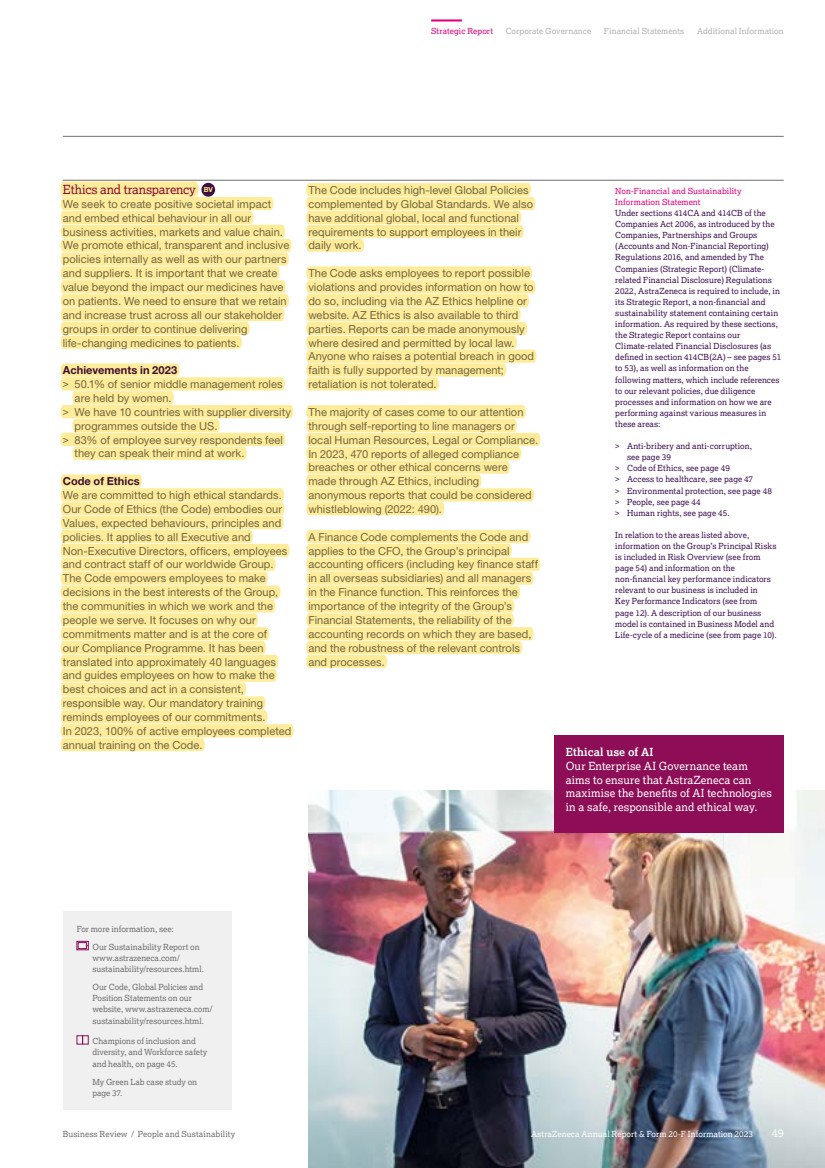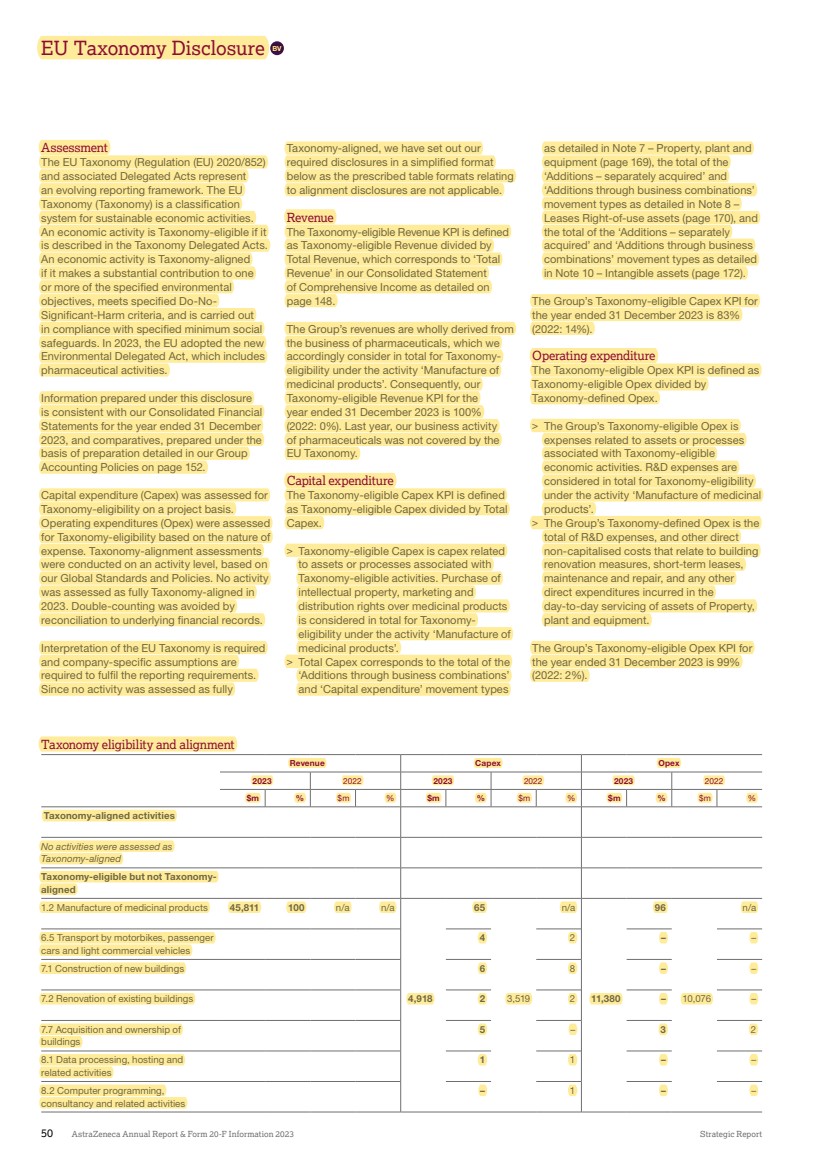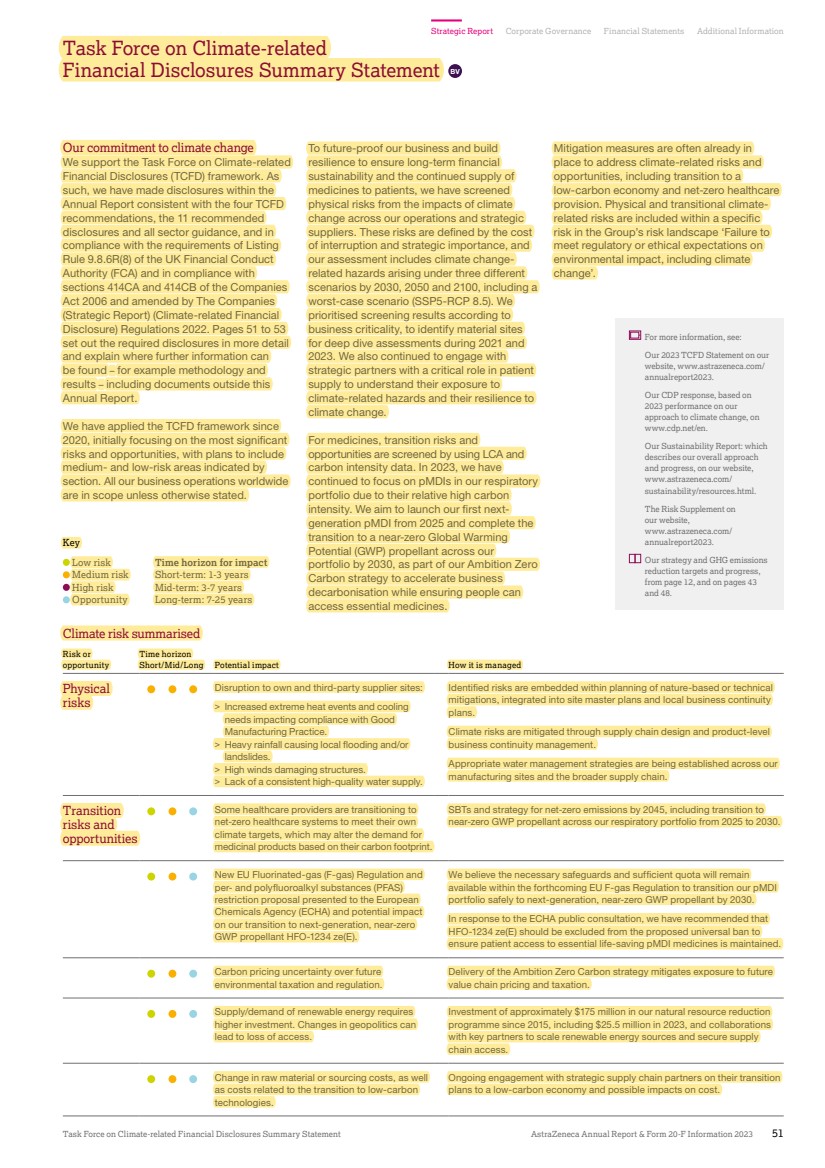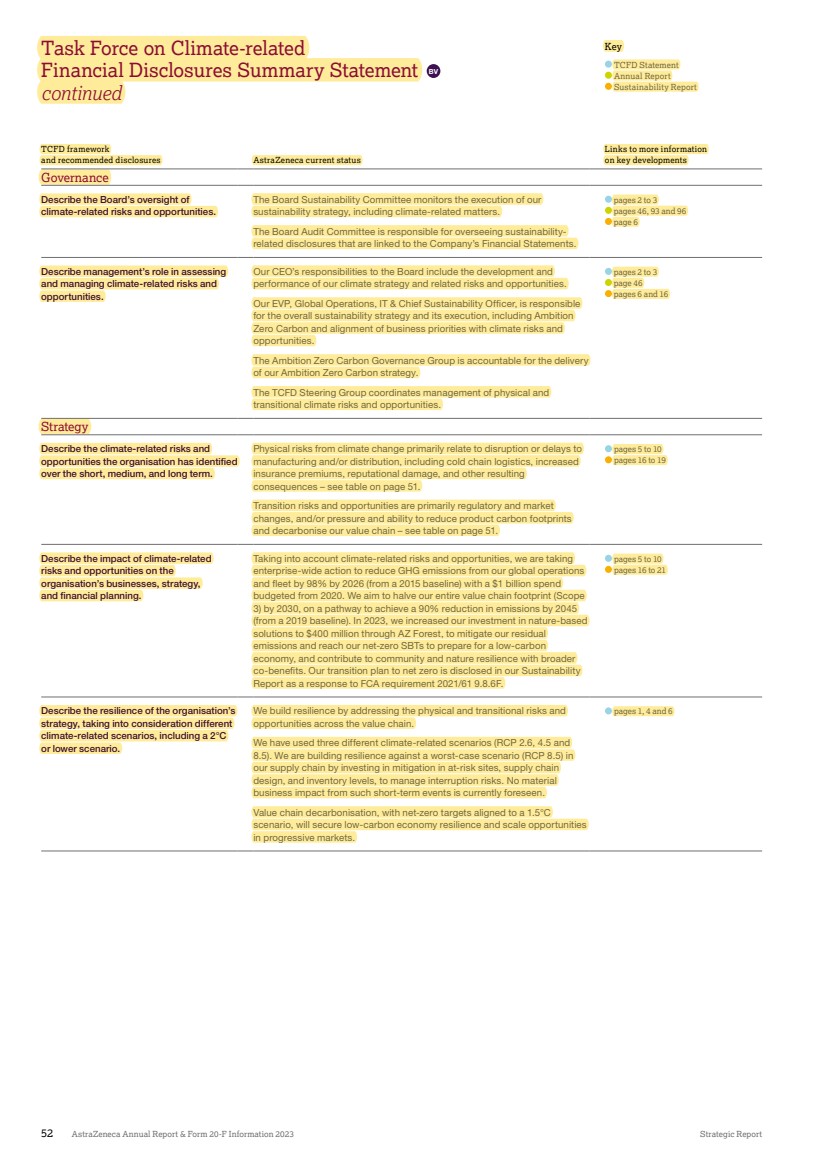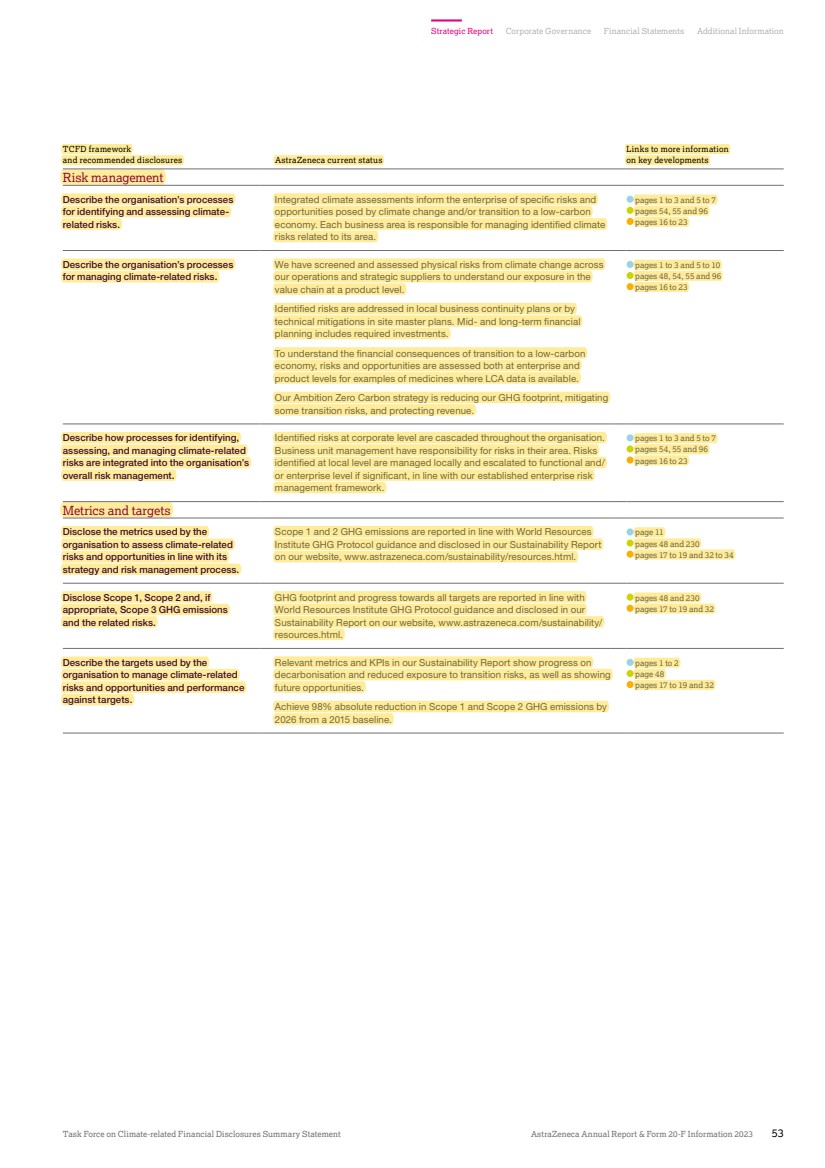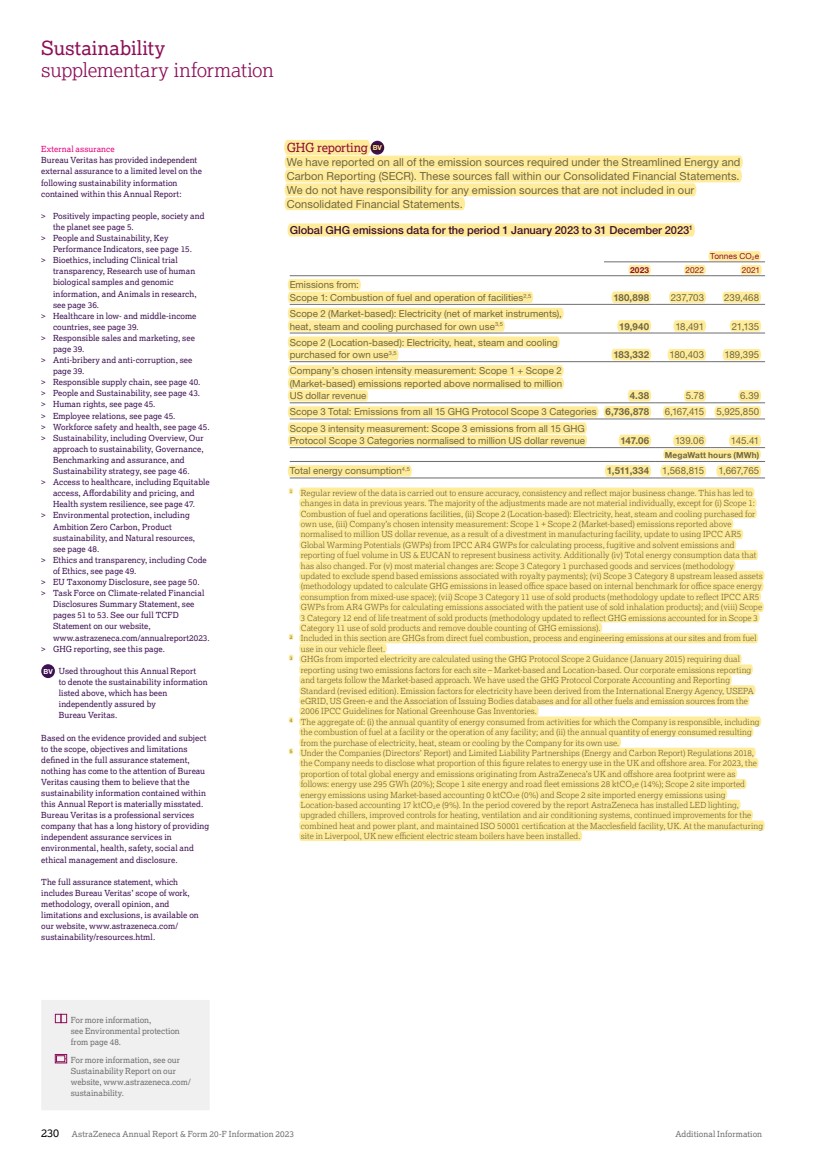
| External assurance Bureau Veritas has provided independent external assurance to a limited level on the following sustainability information contained within this Annual Report: > Positively impacting people, society and the planet see page 5. > People and Sustainability, Key Performance Indicators, see page 15. > Bioethics, including Clinical trial transparency, Research use of human biological samples and genomic information, and Animals in research, see page 36. > Healthcare in low- and middle-income countries, see page 39. > Responsible sales and marketing, see page 39. > Anti-bribery and anti-corruption, see page 39. > Responsible supply chain, see page 40. > People and Sustainability, see page 43. > Human rights, see page 45. > Employee relations, see page 45. > Workforce safety and health, see page 45. > Sustainability, including Overview, Our approach to sustainability, Governance, Benchmarking and assurance, and Sustainability strategy, see page 46. > Access to healthcare, including Equitable access, Affordability and pricing, and Health system resilience, see page 47. > Environmental protection, including Ambition Zero Carbon, Product sustainability, and Natural resources, see page 48. > Ethics and transparency, including Code of Ethics, see page 49. > EU Taxonomy Disclosure, see page 50. > Task Force on Climate-related Financial Disclosures Summary Statement, see pages 51 to 53. See our full TCFD Statement on our website, www.astrazeneca.com/annualreport2023. > GHG reporting, see this page. BV Used throughout this Annual Report to denote the sustainability information listed above, which has been independently assured by Bureau Veritas. Based on the evidence provided and subject to the scope, objectives and limitations defined in the full assurance statement, nothing has come to the attention of Bureau Veritas causing them to believe that the sustainability information contained within this Annual Report is materially misstated. Bureau Veritas is a professional services company that has a long history of providing independent assurance services in environmental, health, safety, social and ethical management and disclosure. The full assurance statement, which includes Bureau Veritas’ scope of work, methodology, overall opinion, and limitations and exclusions, is available on our website, www.astrazeneca.com/ sustainability/resources.html. GHG reporting BV We have reported on all of the emission sources required under the Streamlined Energy and Carbon Reporting (SECR). These sources fall within our Consolidated Financial Statements. We do not have responsibility for any emission sources that are not included in our Consolidated Financial Statements. Global GHG emissions data for the period 1 January 2023 to 31 December 20231 Tonnes CO2e 2023 2022 2021 Emissions from: Scope 1: Combustion of fuel and operation of facilities2,5 180,898 237,703 239,468 Scope 2 (Market-based): Electricity (net of market instruments), heat, steam and cooling purchased for own use3,5 19,940 18,491 21,135 Scope 2 (Location-based): Electricity, heat, steam and cooling purchased for own use3,5 183,332 180,403 189,395 Company’s chosen intensity measurement: Scope 1 + Scope 2 (Market-based) emissions reported above normalised to million US dollar revenue 4.38 5.78 6.39 Scope 3 Total: Emissions from all 15 GHG Protocol Scope 3 Categories 6,736,878 6,167,415 5,925,850 Scope 3 intensity measurement: Scope 3 emissions from all 15 GHG Protocol Scope 3 Categories normalised to million US dollar revenue 147.06 139.06 145.41 MegaWatt hours (MWh) Total energy consumption4,5 1,511,334 1,568,815 1,667,765 1 Regular review of the data is carried out to ensure accuracy, consistency and reflect major business change. This has led to changes in data in previous years. The majority of the adjustments made are not material individually, except for (i) Scope 1: Combustion of fuel and operations facilities, (ii) Scope 2 (Location-based): Electricity, heat, steam and cooling purchased for own use, (iii) Company’s chosen intensity measurement: Scope 1 + Scope 2 (Market-based) emissions reported above normalised to million US dollar revenue, as a result of a divestment in manufacturing facility, update to using IPCC AR5 Global Warming Potentials (GWPs) from IPCC AR4 GWPs for calculating process, fugitive and solvent emissions and reporting of fuel volume in US & EUCAN to represent business activity. Additionally (iv) Total energy consumption data that has also changed. For (v) most material changes are: Scope 3 Category 1 purchased goods and services (methodology updated to exclude spend based emissions associated with royalty payments); (vi) Scope 3 Category 8 upstream leased assets (methodology updated to calculate GHG emissions in leased office space based on internal benchmark for office space energy consumption from mixed-use space); (vii) Scope 3 Category 11 use of sold products (methodology update to reflect IPCC AR5 GWPs from AR4 GWPs for calculating emissions associated with the patient use of sold inhalation products); and (viii) Scope 3 Category 12 end of life treatment of sold products (methodology updated to reflect GHG emissions accounted for in Scope 3 Category 11 use of sold products and remove double counting of GHG emissions). 2 Included in this section are GHGs from direct fuel combustion, process and engineering emissions at our sites and from fuel use in our vehicle fleet. 3 GHGs from imported electricity are calculated using the GHG Protocol Scope 2 Guidance (January 2015) requiring dual reporting using two emissions factors for each site – Market-based and Location-based. Our corporate emissions reporting and targets follow the Market-based approach. We have used the GHG Protocol Corporate Accounting and Reporting Standard (revised edition). Emission factors for electricity have been derived from the International Energy Agency, USEPA eGRID, US Green-e and the Association of Issuing Bodies databases and for all other fuels and emission sources from the 2006 IPCC Guidelines for National Greenhouse Gas Inventories. 4 The aggregate of: (i) the annual quantity of energy consumed from activities for which the Company is responsible, including the combustion of fuel at a facility or the operation of any facility; and (ii) the annual quantity of energy consumed resulting from the purchase of electricity, heat, steam or cooling by the Company for its own use. 5 Under the Companies (Directors’ Report) and Limited Liability Partnerships (Energy and Carbon Report) Regulations 2018, the Company needs to disclose what proportion of this figure relates to energy use in the UK and offshore area. For 2023, the proportion of total global energy and emissions originating from AstraZeneca’s UK and offshore area footprint were as follows: energy use 295 GWh (20%); Scope 1 site energy and road fleet emissions 28 ktCO2e (14%); Scope 2 site imported energy emissions using Market-based accounting 0 ktCO2e (0%) and Scope 2 site imported energy emissions using Location‑based accounting 17 ktCO2e (9%). In the period covered by the report AstraZeneca has installed LED lighting, upgraded chillers, improved controls for heating, ventilation and air conditioning systems, continued improvements for the combined heat and power plant, and maintained ISO 50001 certification at the Macclesfield facility, UK. At the manufacturing site in Liverpool, UK new efficient electric steam boilers have been installed. 230 AstraZeneca Annual Report & Form 20-F Information 2023 Additional Information Sustainability supplementary information For more information, see Environmental protection from page 48. For more information, see our Sustainability Report on our website, www.astrazeneca.com/ sustainability. |
